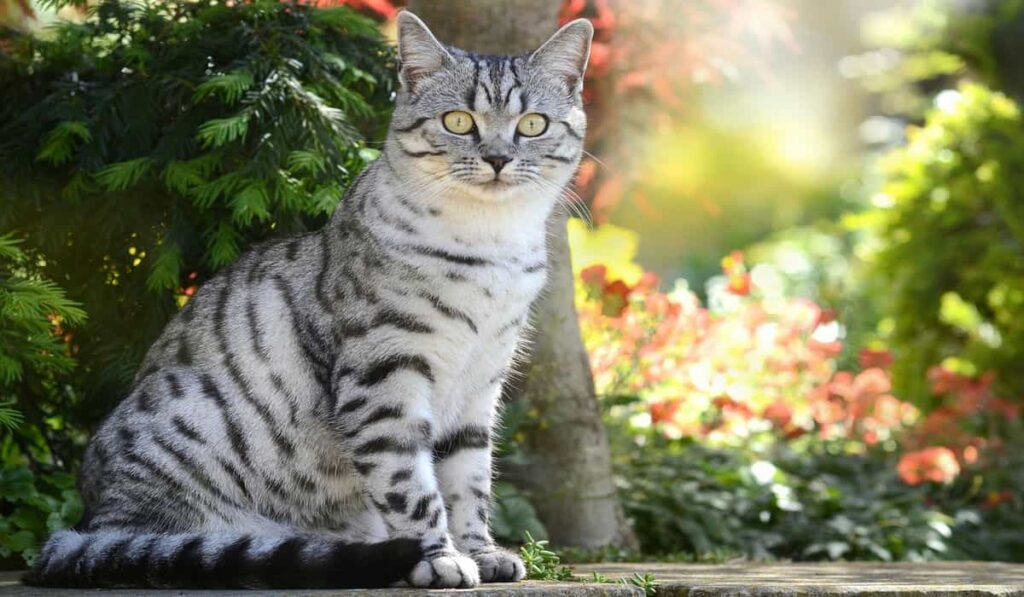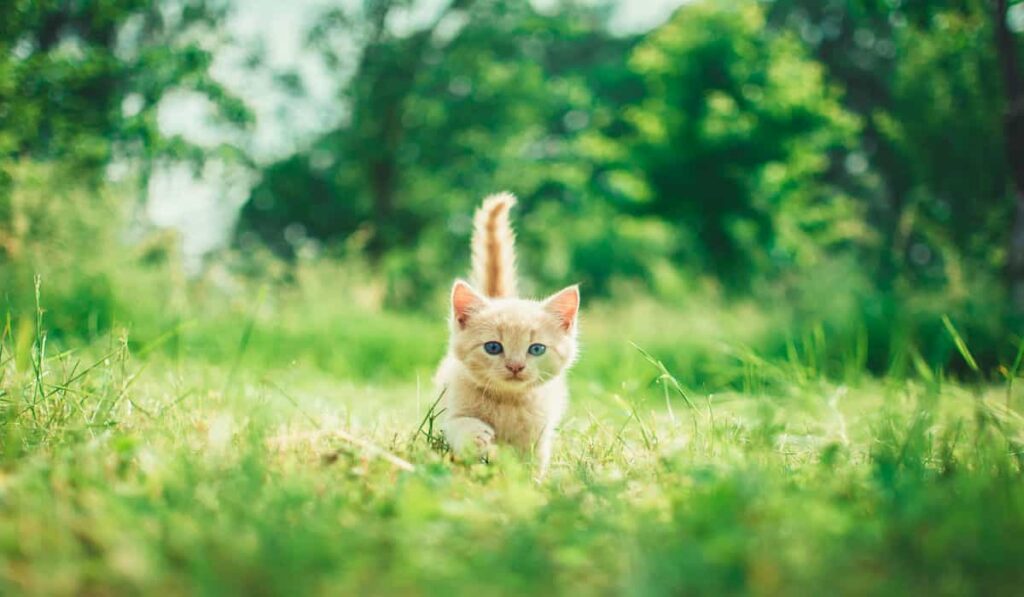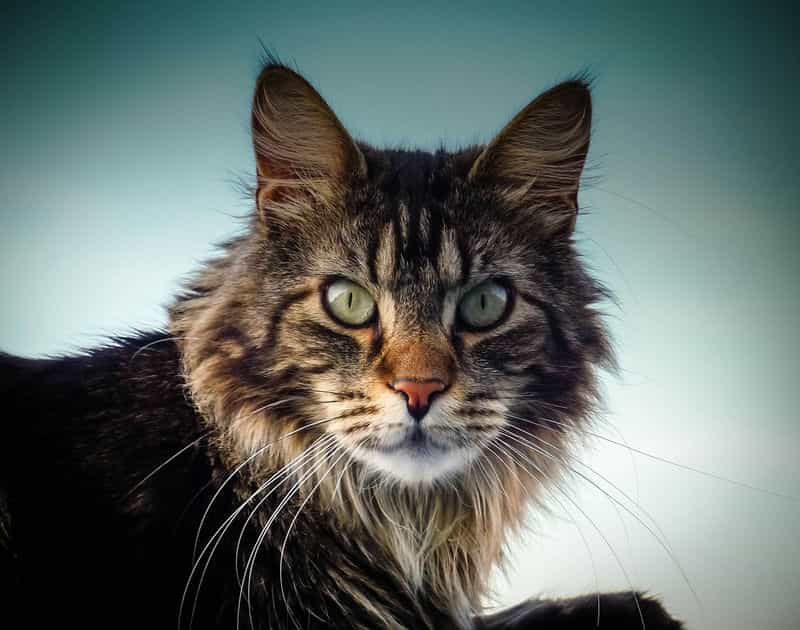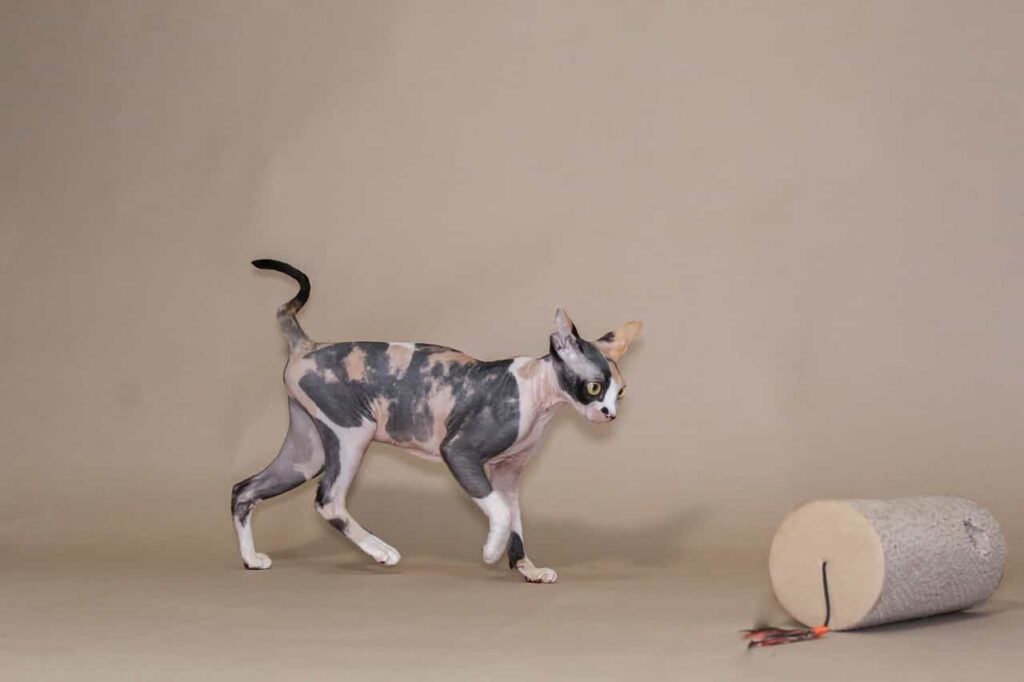Welcome to the fascinating world of the Manx cat breed, a unique and captivating feline that captures hearts with its distinctive tailless feature and charming personality. As you embark on this journey of discovery, prepare to be enchanted by the rich history and intriguing traits of the Manx cat. Renowned for its robust health and playful nature, the Manx cat is a breed like no other. Delve into the nuances of Manx cat care and grooming, understand the depth of their personality traits, and explore the joyous experience of raising a Manx kitten.
From their historical roots to their behavior and socialization, every aspect of the Manx cat breed offers a story worth telling. Whether you’re a seasoned Manx cat owner or considering adoption, this journey promises to enrich your knowledge and appreciation for these extraordinary tailless wonders.
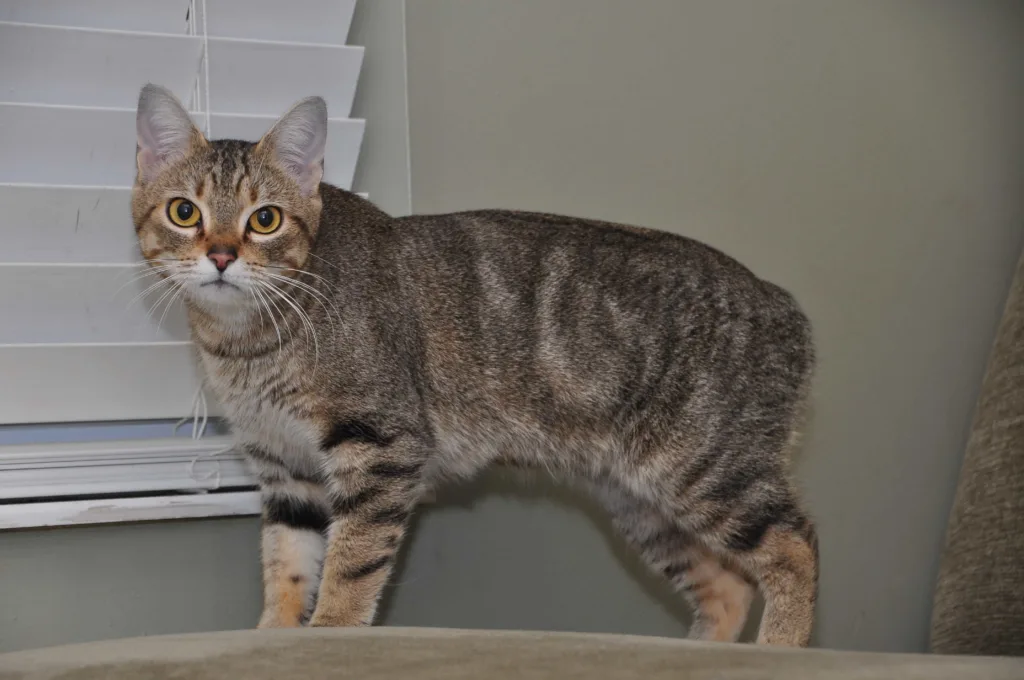

Table of contents
Manx cat Breed
Manx is not crossbred; it’s a naturally mutated cat breed. Its most significant trait is- it’s a tailless cat breed. If a Manx cat doesn’t have a tail-it is called `Rumpy,` and with a slight tail- the cats are called `Rumpy risers,` and with a half-tail, Manx is called` Longy.’
It is a pure British breed and appeared first in the mid-1700 century on the Isle of Man- a small island between Ireland and Great Britain. Some people claim that Mans exist around the 1500 century. However, there is no doubt that Manx is a special breed.
Breed specialty of Manx cat
Other names: Manks, Rumpy, Stubbin
Personality: Placid, sweet, ever-delighted- that means never get upset, easy-going, friendly with the owner, family, big children, strangers, and also other pets if they’re adopted as a kitten, affectionate, social, dog-like.
Coat pattern: Calico, Tortoiseshell, Tabby, Bicolor, ticking, shaded, smoky.
Color: White, Black, Red, Blue, Brown, Silver, Cream, and so on.
Coat length: Both shorthair and longhair
Eye color: Yellow, Hassle, Amber, Gold, Copper, Green, Orange, Blue, and even 2 colors in 2 eyes.
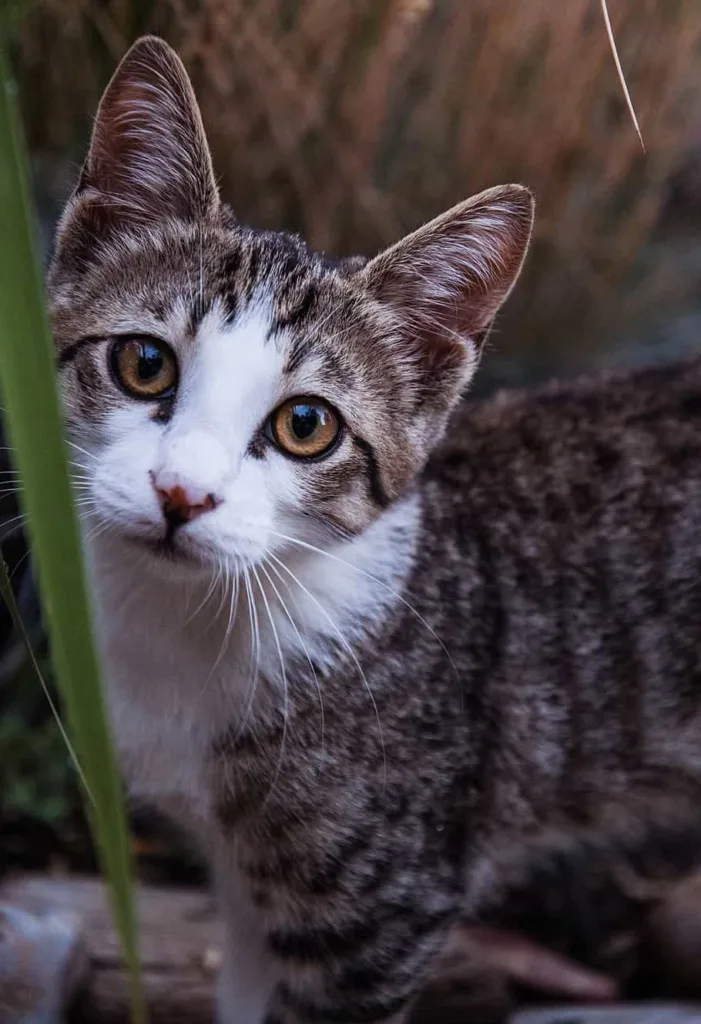

Length: 14-16 inches
Weight: Male- Up to 12 Pounds
Amount of shedding: High
Vocalizing tendency: High
Life span: up to 16 years
Grooming needs: High/ moderated
Origin: Great Britain
Allergenic tendency: High
Origin of the Manx breed
The precise history of the Manx cat is unknown. It is a hereditary abnormality that causes their absence or minimal tail. As I’ve previously indicated, Manx has enjoyed popularity for between 300 and 500 years, ever since they were established on the British Island of the Isle of Man. They gradually gained popularity and domestication due to their hunting prowess.
The dwellers of the Island kept Manx as the pest controllers and other small creatures that came to their houses. Manx was also called `Manks` in a Spanish accent.
Some beliefs behind the taillessness of Manx-
One belief is- the Prophet Noah (A) made his boat for the believers in the Almighty God, named `Arch .`When he was ready to leave the shore, as the Deluge was nearby and closing the door, a cat was running toward the door to come in, but it was too late. The cat could enter Arc, but its tail got caught in the door and cut off from the body. That cat’s descendants were known as Manx cats later. So, they’re tailless.
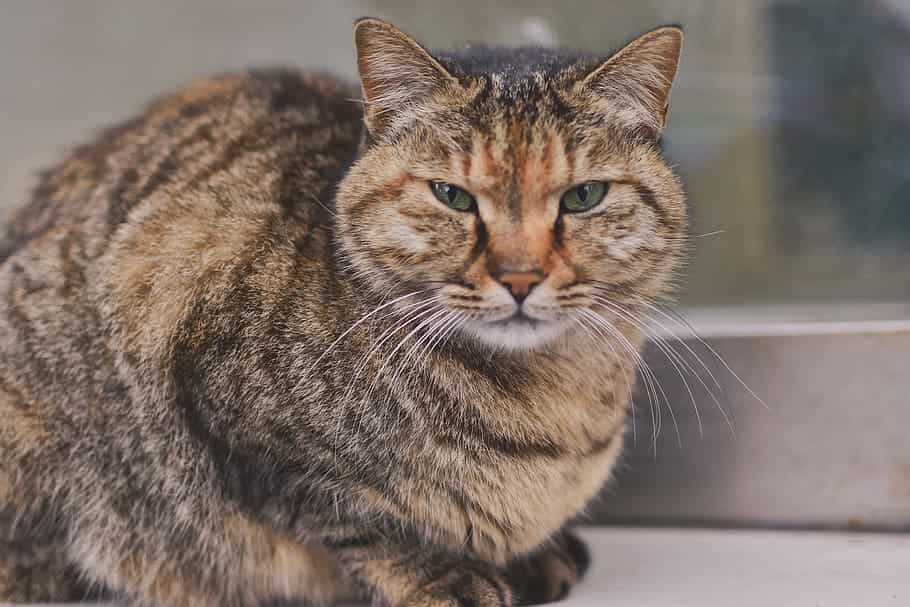

Another legend is- the Invaders used cat’s tails as their Plumes. So, they cut their tails. The most unliked explanation is- Manx is crossbred between a cat and a Rabbit, and they got the tailless trait from the Rabbit.
The most liked explanation is- Manx’s ancestor was an African wild cat who was tailless. The cat made its way to the Isle of Man and spread the tailless trait on the Island. So, a Manx cat is born without a tail.However, there is no evidence behind those explanations. So, it is a genetic change, and the logic is here.
Manx breed was a real show cat and participated in a shoe in 1903, held in London, United Kingdom. It is one of the founding cat breeds of the Cat Fancier’s Association and got registration in 1908. Manx was brought to the USA in the 1920s and crossbred with other cats. It precipitated in a cat show and became the champion in 1951.
Types of Manx cat breed
There are 4 types of Manx cat breeds:
Cymric:
It is the result of breeding between a Manx and a longhaired Persian cat. Cyrmric is a standard Manx cat with longhair.
Isle of Man Longhair:
a Longie Manx cat with a full-length tail. It is different from the breed’s signature trait- taillessness.
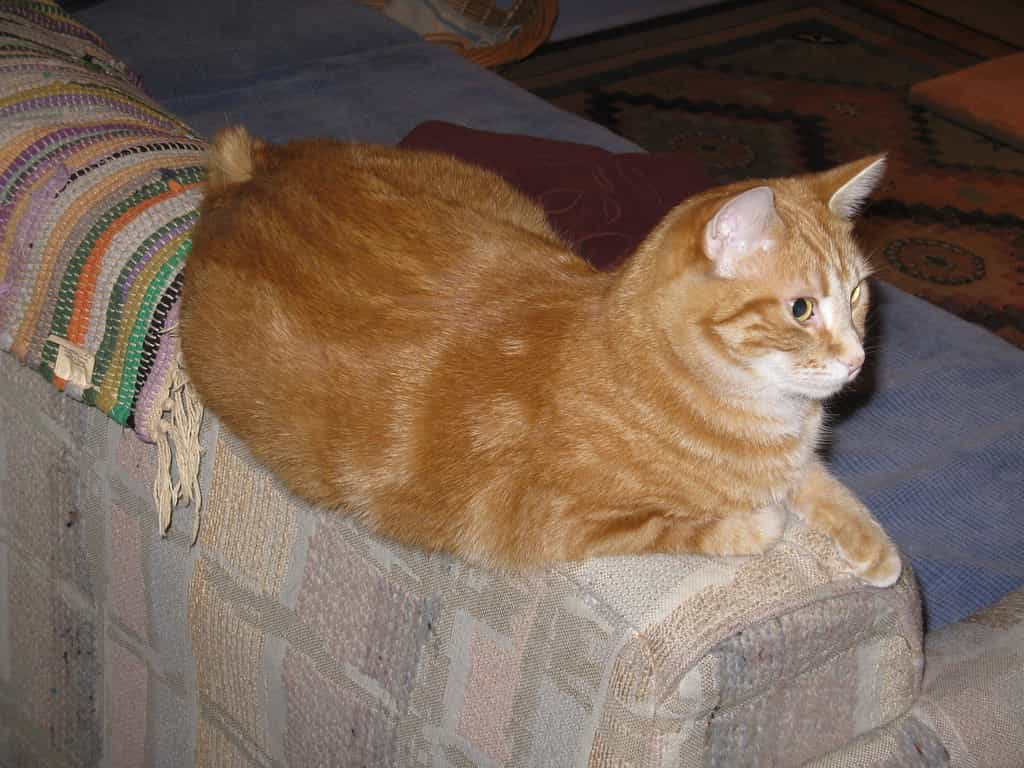

Isle of Man Shorthair:
It is a Cymric with a full-lighted tail. A variation of the Manx family.
Tasman Manx:
They are tailless or half-tailed Manx with curly coats. It is a sub-category of the above cats.
The appearance of the Manx cat
You already know that Manx cats are trademarked for their taillessness or slight tails. Besides, they come with stockier and medium-sized bodies. According to the tail size, they’re divided into 3 classes- Rumpies, Rumpy risers, and Longies.
They also have full chests with flat flanks and sloping shoulders. Their back sides are curved because of back legs are longer than their forelegs. Their heads are round, their eyes and ears are large, and a short nose is in the middle of their face. One thing to be mentioned is that their eye colors are mainly a variation of Golden colors. Manx comes with both long and short hair.
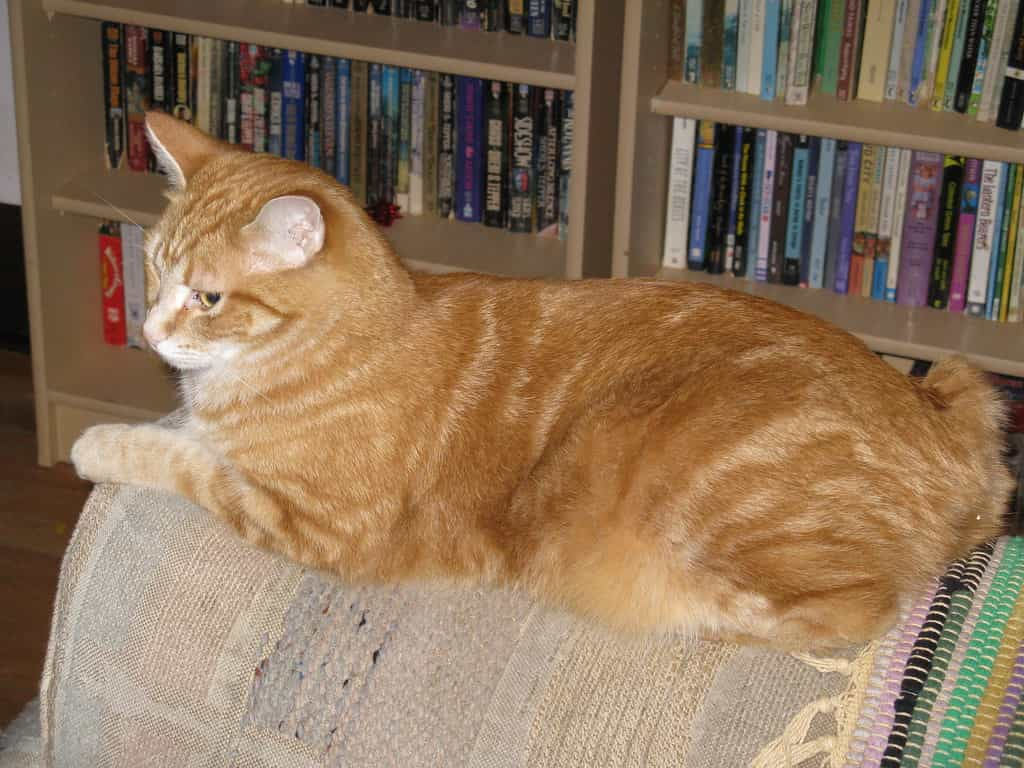

Long haired Manx has a silky coat with a medium length, and Shorthaired Manx has a hard and glossy outer coat. The Shorthairs are more common than the Longhairs, and both Long and Shorthaired have dense and plush coats.
How to identify a Manx cat?
look at their tails. There are 4 kinds of tails that the Manx breed has. Rumpys have no tails at all. There is a dimple at the base of the spine where the tails usually extend. Rumpy risers have a stubby tail and only one to three bones.
Stumpies have short curved or kinked tails, and Longies have a normal tails like other breeds.
Notes: Most breeders cut off the Longie’s tails because some think that Manx cats don’t have long tails. So, the breeders want to avoid any debate about the tails of LONGIES.
Look at the build:
They’re medium to large with a wide chest. Their structure is muscular and compact, and they have a study skeleton. They have Rabbit looks as their hind legs are longer than their forelegs.
Manx cats have broad faces. When you see them from behind, the ears appear rocker and cradle-shaped. The ears are broad-based and taper to a round tip. Manx cats have 2 different kinds of coats.
Shorthaired Manx have a long overcoat with a dense and fluffy undercoat. In the Spring season, the coats the density of the coat decreases due to shedding. The Longhaired Manx has a silky coat. The coats are medium in length, and tufts of hair are situated in the toes and around the ears.
The eyes of Manx cats are big and spherical. The corners of the eyes point upward toward the ears and downward toward the nose. They have eyes that are Green, Hazel, Gold, Copper, and Blue in hue. Odd eyes are common among Manx.
Manx cats are heavier than they see. Male Manx cats can be up to 12 Pounds, and females can be up to 10 pounds. Manx doesn’t come in Chocolate, Lavender, Pointed, and White color varieties. They have a wide variety of colors. So, it is difficult to identify by colors. The common coat patterns are Tabby, Calico, and Tortoiseshell.
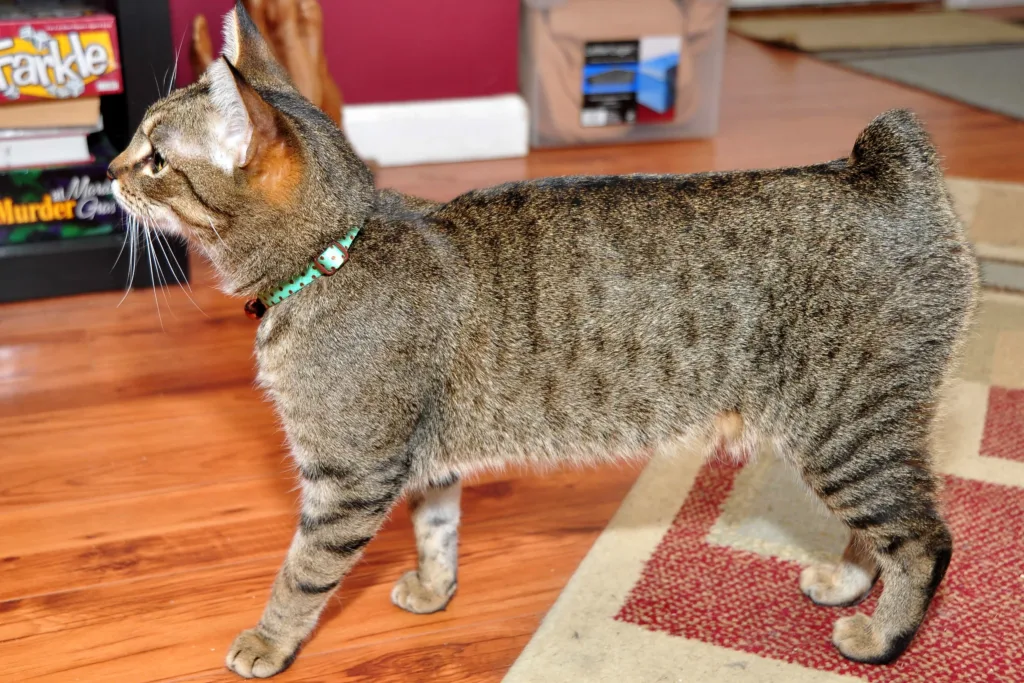

Identifying a Manx Cat by other clues
They are friendly with the owner, children, and other household pets. They love to cuddle and the lap of their owners. And, they are also playful. They jump into the shelf and other elevated purchases. Besides, they have a dog-like nature to chasing after balled-up pieces, Ping pong balls.
Manx cats also like fountains and running water. When you turn the tap off, your Manx will become sad. If your cat vocalizes with a trilling sound, then it is a Manx cat because Manx cats usually don’t vocalize.
You can also identify them by the Manx Syndrome. The syndromes include deformities of the Spine, Bowel, or Bladder issues, poor digestion, and partial Paralysis.
There is a most significant way to identify whether your cat is a Manx.
The way is -the DNA test of your cat. Take your cat to the vet and conduct a test. When you adopt a pet, you must adopt it from a reputable breeder or any recognized shelter or rescue group. They provide the certificate with a responsibility.
Temperament and nature of Manx
We already know that Manx cats are very friendly and family-oriented. They love to spend time with their owners and family and follow their owners across the house. Besides, they are also people-oriented and social. They are also very good hunters, serving you as the pest controllers.
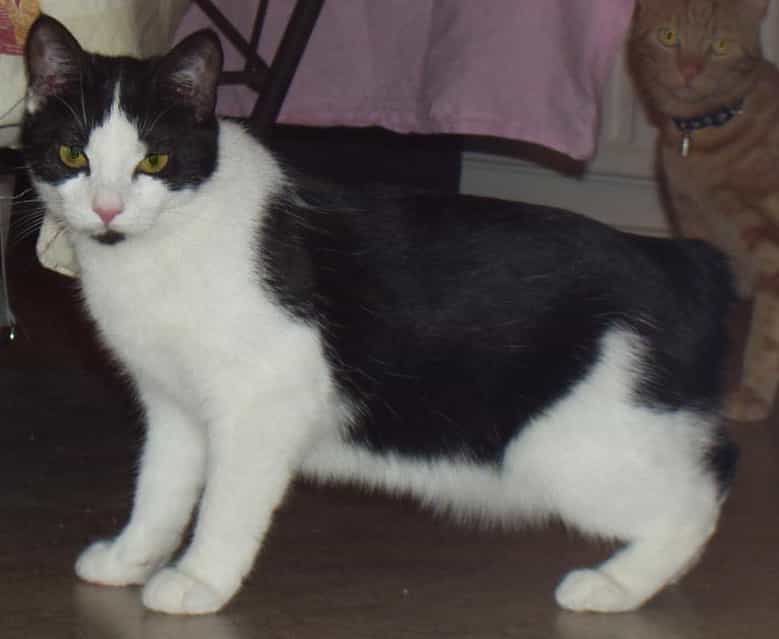

In addition to that, they are also very active and playful. They also respond very well to your commands and also talkative. Manx hunting temperament never turns into aggressive behavior as they’re very sweet and calm. Manx love to play with their favorite toys and climb high.
They also love to play with children if the children are not naughty. Manx cats never get gloomy or upset. They are always happy, playful, active, and busy creatures.
Manx cat Caring guide
Manx cats need daily coat brushing, whatever their coat size is. The shedding amount is high for Manx cats. So, take good care of their coats. Besides, tooth brushing, nail trimming, and taking care of their eyes, nose, and ears are important.
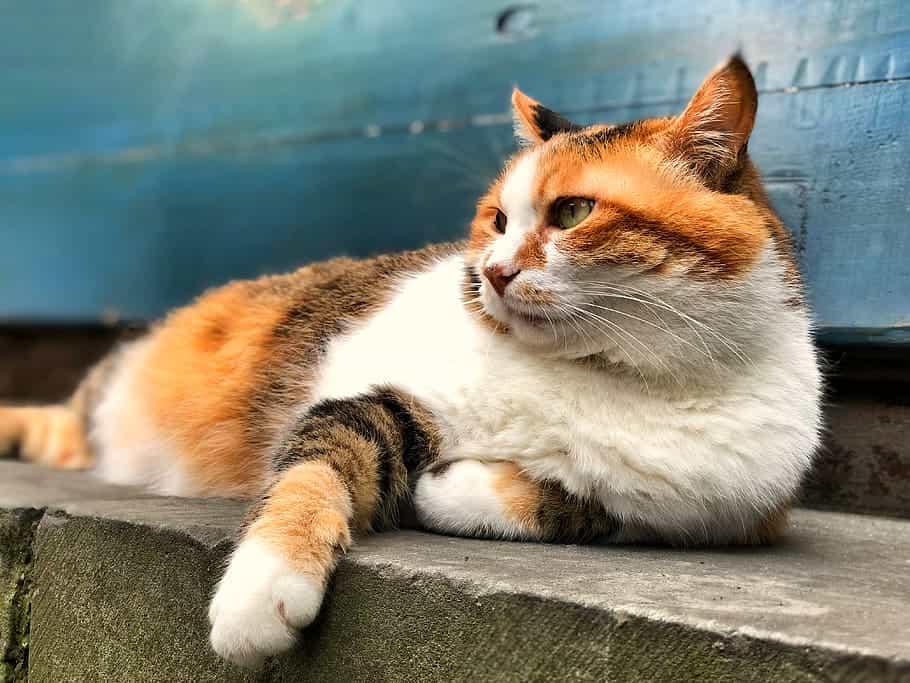

As you know that they’re very active, playful, and good hunters, so you have to provide them with good toys like Mice, Cat nips, and other toys, and tall cat trees are a must if you want your cupboards and shelves safe. They don’t need any special exercise. Just engage them in an hour of playing session and play with them- this will be enough exercise.
Health and problems that the Manx breed has
The biggest health issue of Manx cats is- Manx Syndrome. It is a condition when the tailless gene shortens the spinal cord significantly. It can create problems in the bladder, Gastrointestinal tract, and bowels that cause constipation or incontinence.
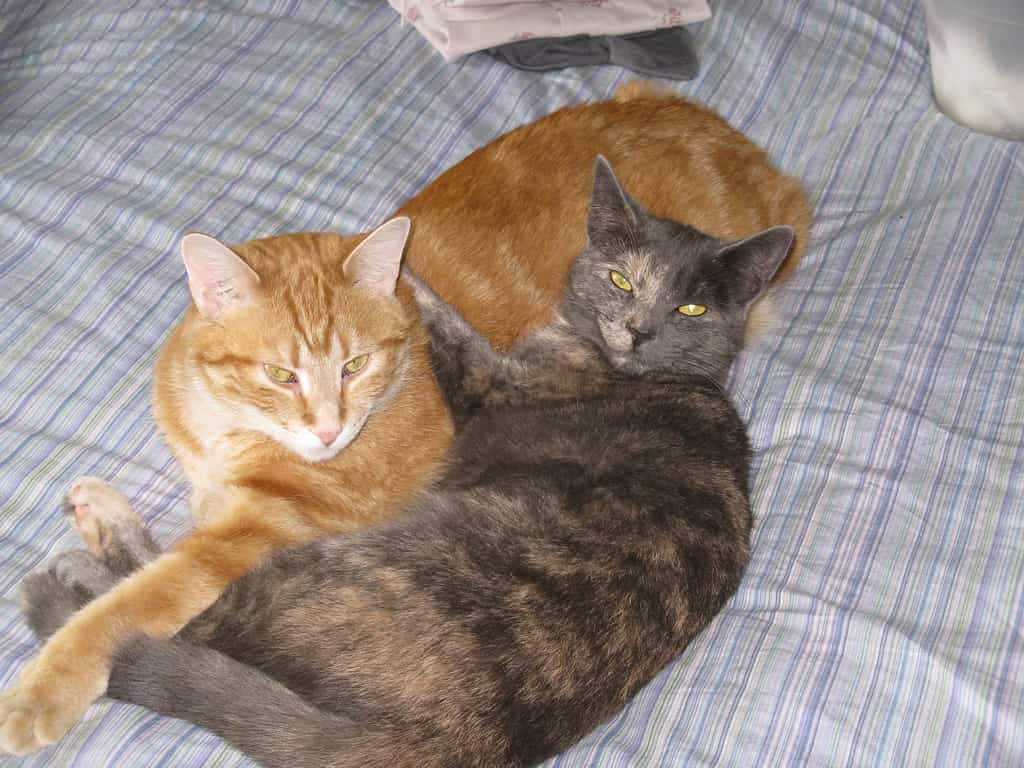

Besides, They also suffer from Arthritis and, at the age of 4 months- Corneal Dystrophy, Spinal Bifida, and Weak hindquarters. So, a regular vet check-up is necessary for their sound body and health.
Food and nutrition that Manx cats need to feed
Manx doesn’t need any special diet. Their food and nutrition need is just like other cat breeds. But you have to ensure enough Fish oils, Omega-3 Fatty acids, Amino acids, and fibers are provided to their food to avoid many shadings and health diseases for good vision and digestion.
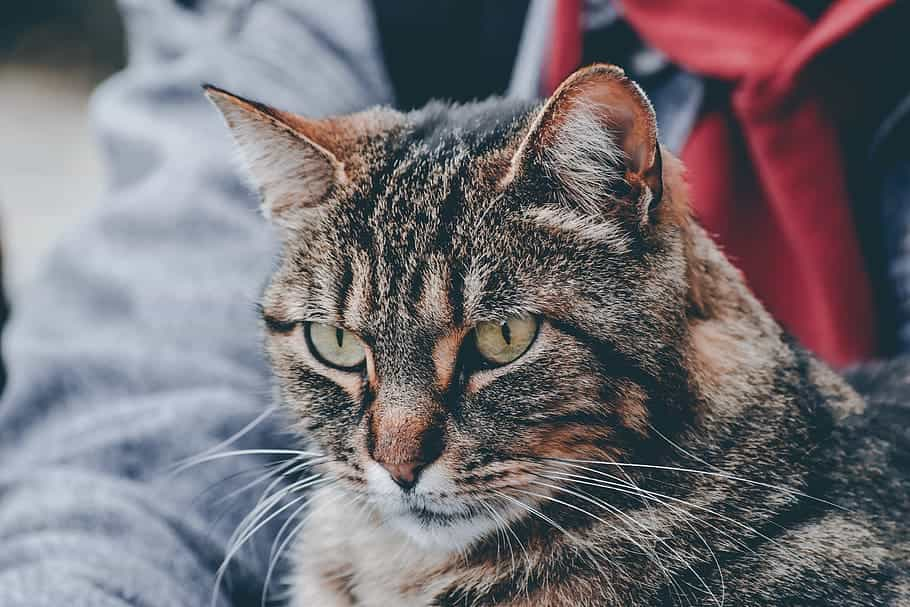

Commercial cat food is ideal for the Manx cat. They don’t like chilled meals. So, their food should be warmed-up. You can serve them both dry and wet food.
Some facts about Manx cats:
- On the Isle of Man island, Manx cats are respected by being printed on Coins, stamps, and various merchandise.
- The people of the Isle of Man call them Rumpy or Stubbin.
- Animals’ tails balance their running, especially tigers. But Manx cat’s taillessness doesn’t impact the Balancing of the cats.
- The Manx breed is the only animal that can come in any eye color.
- They can bounce like Rabbits because of their hind legs.
- Once people believe that the taillessness of Manx cats is such a powerful trait that if any other cat comes near a Manx cat, the cat will produce tailless kittens later. How funny!!!
Some real world-famous Manx cats:
- Ball, Lipstick, and Smocky- the 3 companion cats of a Gorilla named KOKO. It was famous for using American sign language.
- E. Romaine Hertwerk wrote a Biography of a Manx cat in 2009 on an urban Manx cat named Bob.
- There was a cat Mayor in Torkinta, Alaska, named Stubbs.
- Bonnag was a female cat. She becomes the first cat of study.
- There was a chief cat mouser in the Cabinet office of the United Kingdom government in 1964, 1969, and 1974. The cat’s name was Peta.
Famous fictional Manx cats:
- Gordon from the American animated TV series ‘Catscratch’ (2005-2007).
- Max from Adams Whitmor’s ‘Max -the Cat’ 1986 TV series.
- Olaf from the protagonist from ‘Olaf comes home ‘by Cathey Dollina Creamer,2001, and so on.
Reasons that Manx cats may not be the best for you:
Usually, Manx cats are very adorable and good pet cats. But as everything is not for everyone, every cat breed is unsuitable. I want to tell you the reason why Manx cats are not for you:
- Manx has a good reputation for being hunters. They like to hunt rats, birds, and other animals. So, if you don’t want the dead bodies of animals in your house or apartment- don’t have a Manx as your pet.
- They don’t like change. So, if you’re looking for a new baby or another pet in your house, Manx won’t be a good choice. Just one thing you can do. You can adopt a kitten Manx and teach them to adjust to kids and other animals.
- They’re outgoing and independent at times. They like to hunt and roam outside. So, if you want an indoor cat that will always stay around you, look for another cat.
- They’re very active runners and jumpers. So, if you don’t have enough time and energy to run after them, don’t adopt a Manx.
- If you don’t have time and mind to brush their coats daily, then Look for low-grooming cats because Manx needs daily coat brushing as they shed a lot. Their dead hairs can be found anywhere in your house. So, you have to be mentally prepared to tolerate Manx furs. Otherwise, Manx will become a problem for you.
Breed overview of Manx:
The tailless (except the Longies) excellent pets are very active, playful, friendly, and affectionate. There are 4 types of Manx cats- Cymric, Isle of Man Longhair, Isle of Man Shorthair, and Tasman Manx. Some potential health issues are related to Manx cats, named Manx Syndrome. The Sweet and unique Manx cats are perfect family cats.
From where to adopt a Manx cat:
There are many reputed breeders in your area, especially for Manx cats. So, you can easily adopt a Manuet cat from them. Besides, you can ask the rescue groups and shelters. Search the cat associations’ websites to get the lists of breeders.
Name suggestions for Manx cats:
You must need a beautiful name for your Manx after adoption. I suggest some names: Baron, Kirk, Jurby, Finnegan, Elvie, Miles, Poppy, Gael, Scully, Murphy, Dalby, Beatrice, and so on.
Manx Cat Breed Training and Exercise
Training and exercise play a vital role in the well-being of a Manx cat. Known for their intelligence and agility, Manx cats are receptive to training, making it a rewarding experience. When training your Manx cat, use positive reinforcement techniques, which align well with their responsive nature. Their high activity levels demand regular play and exercise, which not only keeps them physically fit but also mentally stimulated.
Incorporating playful activities for Manx cats, such as interactive toys and puzzles, can effectively channel their energy and curiosity. The Manx cat tailless feature adds a unique aspect to their physical capabilities and movement, often making them more agile than many tailed breeds. It’s essential to monitor their activity to ensure they are not overexerting themselves, especially considering the common health problems in Manx cats related to their spinal differences.
Regular, moderate exercise tailored to their capabilities helps maintain optimum health, complementing the Manx cat’s diet and nutrition needs. Exercise routines should be adjusted as the cat ages, keeping in mind the Manx cat’s health and lifespan. Overall, a balanced approach to training and exercise will ensure a healthy, happy, and engaged Manx cat.
Manx Cat Breed Grooming Guide
Grooming is a crucial aspect of Manx cat care, essential for maintaining their health and well-being. The Manx cat breed, with its varied coat varieties, requires a grooming routine tailored to their specific needs. For those with longer coats, regular brushing is necessary to prevent matting and reduce shedding.
Manx cats with shorter coats benefit from less frequent grooming, yet it remains vital for skin health and coat luster. The Manx cat tailless feature requires special attention; the area around the tail should be kept clean to avoid any skin issues. Bathing your Manx cat, though not frequently required, should be done with cat-specific shampoos to maintain the natural oils in their skin and coat. Manx cat grooming goes beyond coat care, encompassing aspects like nail trimming, ear cleaning, and dental hygiene.
Regular grooming sessions are also an opportunity to check for any signs of common health problems in Manx cats, such as skin allergies or lumps. Incorporating Manx cat care and grooming into their routine from a young age helps acclimate them to the process, making it a bonding experience rather than a challenge. A well-groomed Manx cat not only looks striking but also enjoys a better quality of life.
Social Behavior of Manx Cats
The social behavior of Manx cats is a delightful blend of affection and independence, making them ideal companions for various households. These cats are renowned for their friendly and sociable nature, often forming strong bonds with their human families. Manx cats typically exhibit high levels of social interaction, enjoying being in the company of their owners and participating in family activities.
Their temperament, one of the unique personality traits of Manx cats, balances playfulness with a gentle demeanor, making them suitable for homes with children or other pets. Training your Manx cat in socialization skills from a young age can further enhance these inherent qualities. They are adaptable, often fitting well into different living environments, whether it’s a bustling family home or a quieter residence.
The Manx cat’s behavior and socialization are also influenced by their environment and upbringing. Providing them with stimulating toys and engaging in playful activities can encourage positive social behaviors. They are known to be communicative, using their distinct vocalizations to express themselves, a trait endearing to many owners. However, it’s essential to understand each cat’s individual personality, as some may be more reserved or outgoing than others. By recognizing and nurturing the social behavior of Manx cats, owners can ensure a harmonious and loving relationship, celebrating the sociable nature of this charming breed.
Playful Activities for Manx Cats
Engaging in playful activities is essential for the physical and mental well-being of Manx cats. Due to their high activity levels and intelligent nature, Manx cats relish opportunities to play and explore. Providing a variety of toys, such as interactive puzzles, feather wands, and balls, can keep them entertained and mentally stimulated.
These activities not only cater to their playful nature but also foster a bond between the cat and its owner. When considering playful activities for Manx cats, it’s important to remember their unique physical characteristics. The Manx cat tailless feature, for instance, can affect their balance and agility, so activities should be chosen with care to avoid any strain or injury.
Interactive play sessions that encourage hunting behaviors, like chasing or pouncing, are highly beneficial for Manx cats, aligning with their natural instincts. Setting up a cat-friendly environment with climbing trees, scratching posts, and safe outdoor access if possible, can significantly enhance their quality of life.
Regular playtime also helps in managing the Manx cat’s weight, supporting their overall health and longevity. However, it’s vital to adapt play activities to the age and health of the cat, especially considering any common health problems in Manx cats. By integrating a variety of fun, engaging activities into their routine, Manx cats can enjoy a fulfilling and joyful life.
Manx Cat Breed Adoption and Socialization
Adopting and socializing a Manx cat can be an incredibly rewarding experience, filled with unique challenges and joys. When considering adoption options for Manx cats, it’s important to look for reputable breeders or rescue centers that provide healthy, well-socialized kittens or cats. Understanding the Manx cat breed history and its personality traits helps in creating a suitable environment for them. Post-adoption, socialization plays a crucial role in a Manx cat’s life. Introducing them to different people, pets, and environments at a young age helps in developing their confidence and sociability.
Manx cats are known for their friendly and affectionate nature, often adapting well to new surroundings. However, every cat is an individual, and some may require more time and patience to adjust. Engaging in Manx cat behavior and socialization activities, such as gentle play and regular handling, can foster trust and a strong bond. It’s also crucial to provide them with a safe and comfortable space where they can retreat if overwhelmed. Regular veterinary visits for health checks, vaccinations, and discussions about Manx cat care and grooming are part of responsible pet ownership. By understanding and catering to the unique needs of a Manx cat, adopters can ensure a smooth transition into their new home, paving the way for a long-lasting and loving relationship.
Conclusion
In conclusion, the Manx cat breed, with its distinctive tailless feature and endearing personality, offers a unique and fulfilling experience to cat enthusiasts. From understanding their specific grooming needs to engaging in playful activities tailored to their physical characteristics, caring for a Manx cat is a journey of discovery and joy. Their social behavior, marked by affection and intelligence, makes them wonderful companions, adaptable to various lifestyles.
The process of adopting and socializing a Manx cat, while requiring commitment and understanding, is immensely rewarding, leading to a deep, enduring bond. Embracing the Manx cat’s distinct traits, from their health considerations to their playful nature, enables owners to provide a nurturing environment where these cats can thrive. Ultimately, the Manx cat breed, with its rich history and charming demeanor, captures hearts, offering a unique blend of companionship, love, and playful antics that enrich the lives of those fortunate enough to share their home with one of these magnificent felines.

